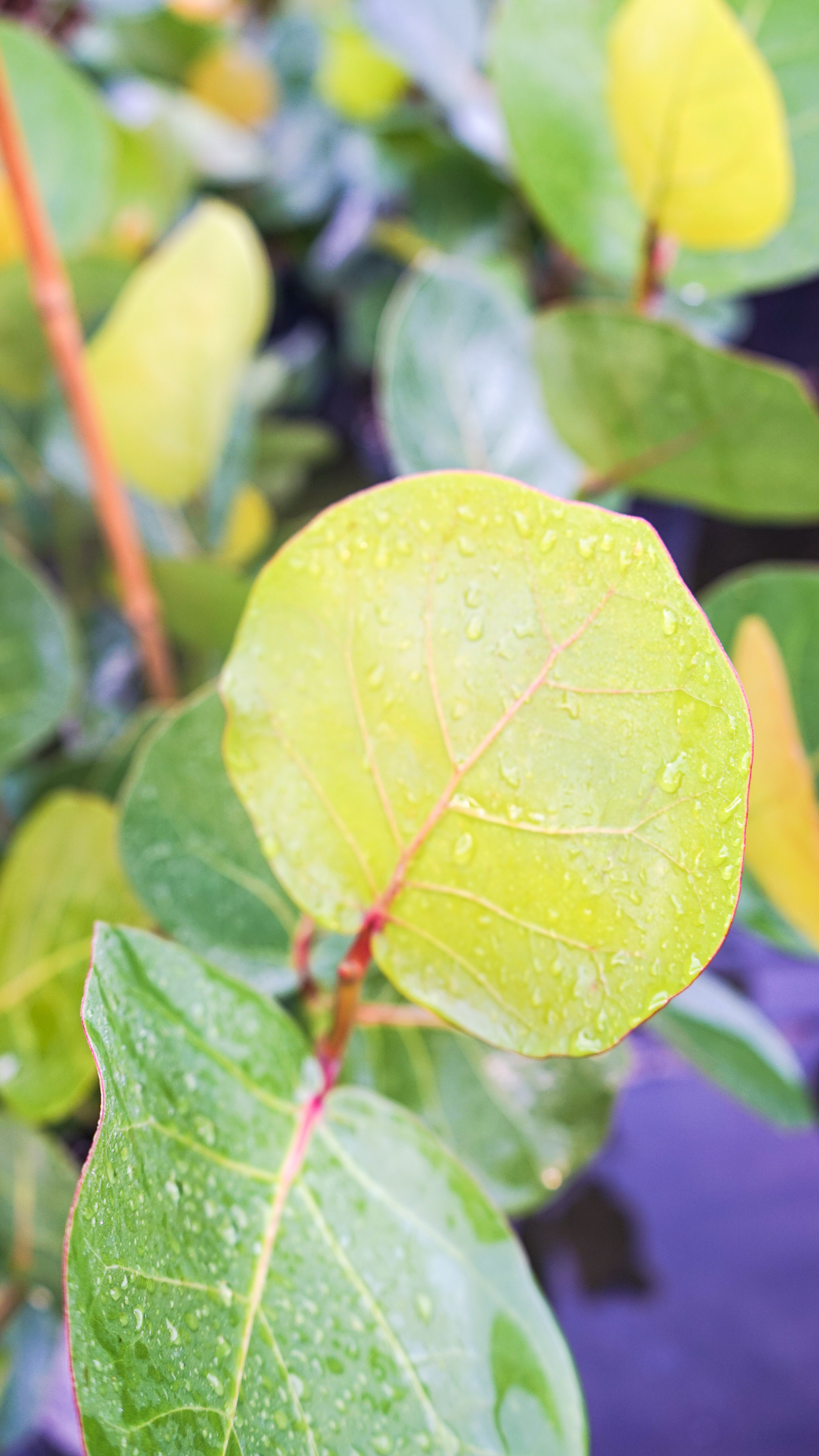Common Name Sea Grape
Latin Name Coccoloba uvifera
Family Polygonaceae
Zone 10A-10B-11
Height 10-50;62 Feet
Spread Almost as wide as it is tall
Salt Water Tolerance High
Salt Wind Tolerance High
Drought Tolerance High
Soil Tolerates most soil types
Sun Full Sun
Wildlife Attractant Butterflies; larger wildlife
Sea Grape Coccoloba uvifera
Main Uses
The Sea Grape is perfect as large shade trees in coastal areas, as well as formal or informal hedges and as buffer plants.
It’s mainly found near beaches and sandy dunes, however, they can still be used in yards and streets.
Appearance
Once established, it does not require any supplemental water, making it a lower maintenance tree.
It is a highly salt tolerant plant.
The leaves of the Sea Grape are very noticeable in that they are large and roundish in shape, ranging from 6-12 inches in diameter.
The Sea Grape is very similar in appearance to its Sea Plum and Pigeon Plum relatives. Much like the Pigeon Plum, the Sea Grape's fruit can be also be made into jelly and wine.
Wildlife Attractant
The growth patterns allow for substantial coverage for wildlife.
The Sea Grape fruits are eaten by many birds and is a nectar plant for Florida Duskywing, Julia, Schaus' Swallowtail, the introduced Fulvous Hairstreak, and other butterflies. Larger wildlife eat the fruits.





